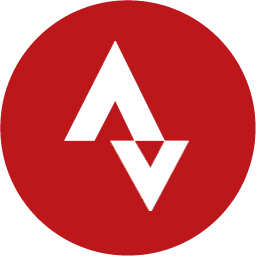The triathlon is extraordinary in that it combines three linked disciplines: swimming, cycling and running. These components are contested through several long distance or short distance race formats. Are you hesitating to embark on this triple adventure? Before you jump in the water, get on your bike and put on your runnings, Ekoï reveals everything you need to know about the different triathlon events. Without transition!
The race formats of triathlon events
Triathletes compete in three events with distances varying according to race format.
The distances in triathlon, recognized by the French Triathlon Federation (FFTRI), are six:
- distance XS, discovery format;
- distance S, sprint format;
- distance M, Olympic format;
- distance L, long distance format;
- distance XL, long distance format;
- distance XXL, mythical format of the Ironman.
There is also the Ironman 70.3 or half-Ironman (equivalent to half the Ironman distance), and the ultra-triathlon, where supermen run extreme distances, corresponding to several XXL triathlons.
The triathlon swim event
A triathlon always takes place in the same order: swimming, cycling, then running. It is therefore in the water that triathletes begin their race following a mass start or rolling start, dressed in a tri-function or neoprene suit. Swimming attire is conditioned by water temperature, as stipulated in the rules.
The swimming event takes place in open water. It can be practiced in the sea or lake, sometimes in a river or canal. The course is marked by buoys placed by the organizers. While most triathletes swim in crawl, beginners, often impressed, prefer to opt for breaststroke for safety or ease. All strokes are allowed in the rules.
Swimming distances in triathlons:
- 400 m (XS);
- 750 m (S);
- 1.5 km (M);
- 1.9 km (Ironman 70.3) ;
- 3 km (L) ;
- 3.8 km (Ironman or XXL) ;
- 4 km (XL).
The triathlon cycling event
This is the second event in the triathlon: competitors must bike a given distance. They pick up their bikes from the bike park near the water, and then climb into the saddle once out of the transition area.
The circuit is a one-hour ride, and the bike will be ready to be ridden
The route constitutes a round trip, a loop or multiple loops. As for the profile of the route taken, it varies depending on the region or city where the triathlon is held. It can be rolling, moderately hilly, or with a steep incline.
The cycling portion of the triathlon is the one that lasts the longest. Drafting is basically prohibited during the cycling event, except for short distance formats. This means that triathletes are not allowed to ride in a pack and must pedal solo.
Triathlon cycling distances:
- 10 km (XS);
- 20 km (S);
- 40 km (M);
- 80 km (L) ;
- 90 km (Ironman 70.3) ;
- 120 km (XL) ;
- 180 km (Ironman or XXL).
In cross-triathlon, the cycling component takes place on mountain bikes on trails and paths, not on the road.
The running event in triathlon
The athlete crosses the finish line by running! The running event actually closes triathlons, regardless of the race format.
Just as with the bike, participants complete one round trip or several loops on a pedestrian course with varying degrees of positive elevation gain. This is often the most difficult part for triathletes, already exhausted from the previous two events. Good effort management and a mental toughness are essential to finish the triathlon.
Triathlon running distances:
- 2.5 km (XS);
- 5 km (S);
- 10 km (M);
- 21.1 km, which is a half marathon (Ironman 70.3) ;
- 30 km (L and XL) ;
- 42.195 km, or a marathon (Ironman or XXL).
In cross-triathlon, the running section takes place off-road and is similar to a trail: the terrain is more technical and rugged, similar to the mountain bike component.
Transitions, the 4th discipline of triathlon
Transitions are an integral part of triathlon: they are a defining 4th discipline. That's right, the clock keeps ticking during the transition phases! These stages during which triathletes link swimming-biking (T1) and then biking-running (T2) require real training to gain precious race minutes.
The key? Prepare well beforehand!
The key?
Do you fancy a triathlon? Train in a club or with friends and then sign up for a discovery format (XS) to test the sequence of disciplines over a short distance. Have a good triathlon!






